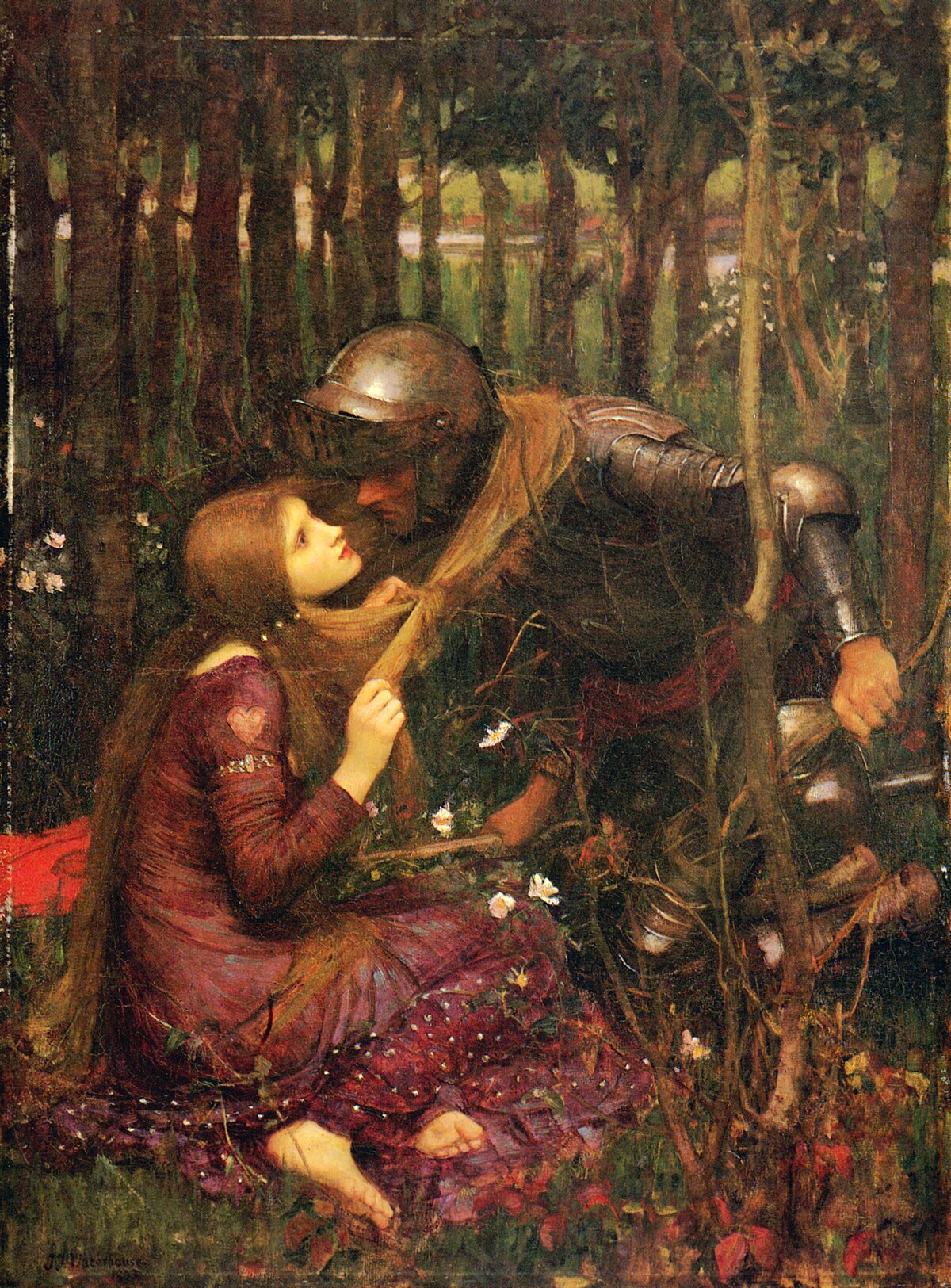Poem

O what can ail thee, knight-at-arms,Alone and palely loitering?The sedge has withered from the lake,And no birds sing.
O what can ail thee, knight-at-arms,
So haggard and so woe-begone?
The squirrel’s granary is full,
And the harvest’s done.
I see a lily on thy brow,
With anguish moist and fever-dew,
And on thy cheeks a fading rose
Fast withereth too.
I met a lady in the meads,
Full beautiful, a fairy’s child;
Her hair was long, her foot was light,
And her eyes were wild.
I made a garland for her head,
And bracelets too, and fragrant zone;
She looked at me as she did love,
And made sweet moan
I set her on my pacing steed,
And nothing else saw all day long,
For sidelong would she bend, and sing
A faery’s song.
She found me roots of relish sweet,
And honey wild, and manna-dew,
And sure in language strange she said—
‘I love thee true’.
She took me to her Elfin grot,
And there she wept and sighed full sore,
And there I shut her wild, wild eyes
With kisses four.
And there she lullèd me asleep,
And there I dreamed—Ah! woe betide!—
The latest dream I ever dreamt
On the cold hill side.
I saw pale kings and princes too,
Pale warriors, death-pale were they all;
They cried—‘La Belle Dame sans Merci
Hath thee in thrall!’
I saw their starved lips in the gloam,
With horrid warning gapèd wide,
And I awoke and found me here,
On the cold hill’s side.
And this is why I sojourn here,
Alone and palely loitering,
Though the sedge is withered from the lake,
And no birds sing.
Summery
"La Belle Dame sans Merci" is a ballad written by the English poet .John Keats It exists in two versions, with minor differences between them. The original was written by Keats in 1819. He used the title of the 15th-century La Belle Dame sans Mercy by Alain Chartier, though the plots of the two poems are different.[2]
The poem is considered an English classic, typical of other of Keats' works. It avoids simplicity of interpretation despite simplicity of structure. At only a short twelve stanzas, of only four lines each, with a simple ABCB rhyme scheme, the poem is nonetheless full of enigmas, and has been the subject of numerous interpretations.
"La Belle Dame sans Merci" is a popular form given an artistic by the Romantic poets. Keats uses a stanza of three iambic tetrameter lines with the fourth dimetric line which makes the stanza seem a self-contained unit, giving the ballad a deliberate and slow movement, and is pleasing to the ear. . Keats's economical manner of telling a story in "La Belle Dame sans Merci" is the direct opposite of his lavish manner in "The Eve of St. Agnes". Part of the fascination exerted by the poem comes from Keats' use of understatement.
Keats sets his simple story of love and death in a bleak wintry landscape that is appropriate to it: "The sedge has wither'd from the lake / And no birds sing!" The repetition of these two lines, with minor variations, as the concluding lines of the poem emphasizes the fate of the unfortunate knight and neatly encloses the poem in a frame by bringing it back to its beginning. Keats relates the condition of the trees and surroundings with condition of the knight who is also broken.
In keeping with the ballad tradition, Keats does not identify his questioner, or the knight, or the destructively beautiful lady. What Keats does not include in his poem contributes as much to it in arousing the reader's imagination as what he puts into it. La belle dame sans merci, the beautiful lady without pity, is a femme fatale, a Circe-like figure who attracts lovers only to destroy them by her supernatural powers. She destroys because it is her nature to destroy. Keats could have found patterns for his "faery's child" in folk mythology, classical literature, Renaissance poetry, or the medieval ballad. With a few skillful touches, he creates a woman who is at once beautiful, erotically attractive, fascinating, and deadly.
No comments:
Post a Comment